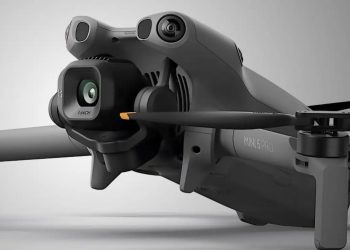The Insta360 vs DJI rivalry is now defining the future of China’s imaging and drone industry. Insta360 is expanding beyond cameras into drones and smart audio, while DJI continues to leverage its market dominance. Both companies are competing not only for customers but also for investor confidence, as valuations and profits face growing pressure.
Rising Tensions in the Market
Insta360’s shares surged after the August launch of its Antigravity panoramic drone brand. Optimism briefly pushed its market capitalization above RMB 140 billion (USD 19.6 billion). Yet by September, momentum faded when the company reported interim results.
Revenue in the first half of 2025 rose 51.2% year-on-year to RMB 3.67 billion (USD 513.8 million). Net income attributable to shareholders was RMB 520 million (USD 72.8 million), but growth was just 0.25%. Profitability concerns led to a selloff, with the stock falling more than 10% from its early September peak.
Insta360’s Strengths
As a pioneer in panoramic cameras, Insta360 still relies heavily on its imaging business, which contributed 86% of revenue in the first half. Margins remain strong at 51.22%, even higher than Apple’s. The company has gained ground through innovation in stabilization, AI imaging, and a broader software ecosystem. Its success has also benefited from supply chain efficiencies and market share taken from GoPro.
DJI Strikes Back
The Insta360 vs DJI battle intensified in July when DJI launched the Osmo 360, directly targeting Insta360’s flagship devices. The Osmo 360 quickly sold out, echoing the appeal of Insta360’s X5. DJI also announced a panoramic drone to rival Antigravity. With overlapping technology and global sales channels, DJI can cut prices or accelerate launches, potentially compressing margins across the sector.
Mounting Costs and Risks
To maintain leadership, Insta360 has doubled down on research and development. In the first half of 2025, R&D spending climbed to RMB 560 million (USD 78.4 million), more than double last year. Marketing costs are also rising as the company tries to build brand strength.
The focus on multiple growth tracks—panoramic drones, smart audio devices, and new camera types—comes with risk. Chasing too many fronts could stretch resources thin and dilute Insta360’s competitive advantage.
Valuation Under Scrutiny
Since its IPO in June, Insta360’s stock has climbed nearly sixfold. As of September 11, its market cap stood at RMB 127 billion (USD 17.8 billion), with a lofty price-to-earnings ratio above 100. Comparable companies such as Xiaomi, Xgimi, Anker, and Roborock trade at far lower multiples.
Projections show the global handheld smart imaging market could reach RMB 127 billion (USD 17.8 billion) by 2030. If Insta360 secures 35% of that market and adds RMB 5 billion from drones, revenue could approach RMB 49.5 billion (USD 7 billion). With slimmer net margins of 10–12%, net profit might reach RMB 5–6 billion (USD 700–840 million). That would justify a valuation of RMB 100–150 billion (USD 14–21 billion) at a PE of 20–25.
A Market Priced for the Future
Today’s valuation suggests that investors have already priced in projected 2030 growth, including drone revenues. Any delay in execution, combined with DJI’s aggressive push, could spark a correction. The Insta360 vs DJI rivalry is not just about technology—it is about proving which company can scale innovation into sustainable profits.














